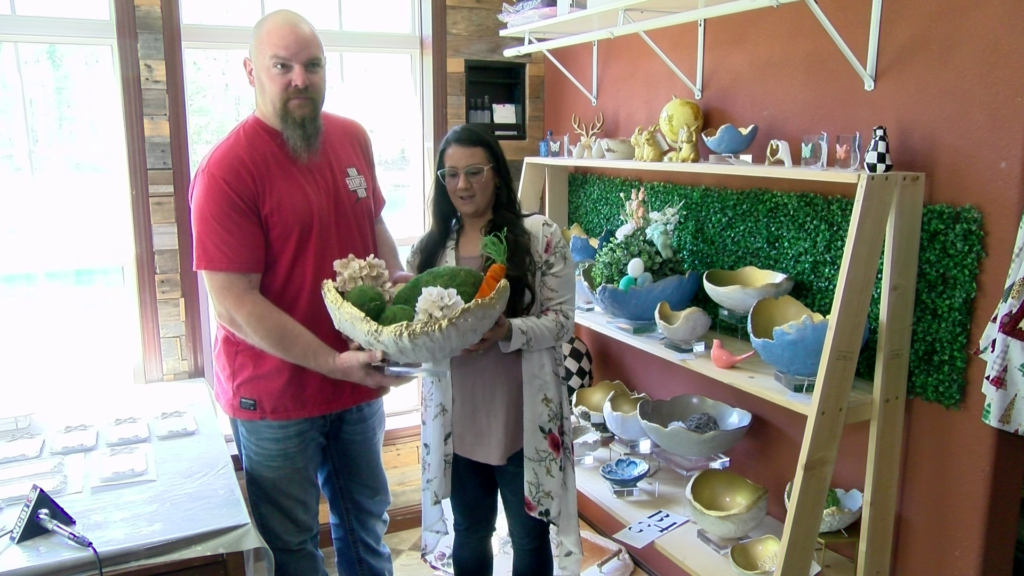Artist helps Rohingya women face sexual violence, past and present
Dibarah Mahboob starts her day at Cox’s Bazar, in her native Bangladesh, around dawn. After a run, she makes breakfast and then heads out to the nearby camps swollen with more than half a million Rohingya refugees from neighboring Myanmar.
There, the 28-year-old artist and activist spends the day hearing the displaced Rohingyas’ stories of trauma and resilience, and helping the women and children in the camps deal with the lingering pain caused by the sexual violence they fled back home. And for many, the threat of sexual violence has followed them across the border.
Myanmar’s military is accused of using rape as sexual abuse a weapon in its violent campaign against the Rohingya Muslim minority, centered in the western Rakhine state, which ramped-up in August 2017.
An estimated 700,000 Rohingyas have fled to Bangladesh. Human Rights Watch documented the accounts of several Rohingya rape victims in a report released in November. Many of the victims, now in Bangladesh, are left to battle post-traumatic stress disorders and depression.
And while they are now safe from the crackdown in Myanmar, Mahboob has found Rohingya women and girls still face the threat of sexual violence and harassment in the camps in Bangladesh.
“The camps are currently pitch dark at night. No aid workers or security personnel are there,” Mahboob tells CBS News. “We too often hear that women don’t even go out at night to relieve themselves, because of the danger that lurks in the dark.”
Compounding the threat of sexual violence, there are severe risks for Rohingya refugees, especially girls, of being sexual exploited. There have already been reports of Rohingya women being forced into prostitution.
“Human trafficking and exploitation are rife among Rohingya refugees who have fled Myanmar to seek safety in Cox’s Bazar,” the U.N.’s International Organisation for Migration (IOM) has warned. “The number of criminals and trafficking rings has expanded… The abuse mainly occurs in neighbourhoods surrounding the settlements, but recruiters are also taking people to places as far away as Cox’s Bazar city, Chittagong and Dhaka,” the report concluded.
In addition to hearing their stories, which provide inspiration for her work as an artist, Mahboob also tries to help the Rohingya refugees in Cox’s Bazar learn to stick up for themselves.
“The girls are very meek and hesitant, even in women-only spaces. It takes a lot of energy and animation to invite them to open up,” says Mahboob, who teaches the women and girls self defense techniques. “These are women who were isolated forever, and they may still be riddled with trauma. Their understanding of assertion is not like the rest of us.”
Several organisations, including United Nations agencies, provide support and training to the women.
Bangladeshi artist and activist Dibarah Mahboob stands among dozens of Rohingya refugee children at a camp in Cox’s Bazar, Bangladesh.
Dibarah Mahboob
Mahboob has worked in Cox’s Bazar since 2015. Before that she worked with an aid agency in Jordan, with Syrian and Iraqi refugees. Some of her recent work reflects her experiences with the Rohingya refugees.
“I’m inspired by their resilience, and it reflects in my paintings,” she explains. “They have been isolated, crossed borders in unthinkable hardship, and still manage to smile.”
As an artist and an activist, Mahboob is focused on issues facing women, and she is optimistic about initiatives to combine her two passions.

Bangladeshi artist and activist Dibarah Mahboob.
CBS
“There are aid agencies incorporating drawing and expression into therapy, and it’s wonderful,” she says. “It gives vulnerable souls the space to express freely without fear of difficult words, and also to bring back beauty in their hands and lives.”
Currently, most of creative expression therapies are focused on children, whom Mahboob says, “have less barriers to pouring their consciousness into drawings.”
“Traumatised women” on the other hand, “have a world of barriers.” But Mahboob says they, too, “can be soothed and empowered through creative expression.”
Mahboob grew up in Dhaka but attended college in Massachusetts. In 2015, when she returned to Bangladesh, she decided to work toward giving women a bigger voice in South Asian societies, where they can often be stifled. The first weapon she picked up was her paint brush.

Painting by Bangladeshi artist and humanitarian activist Dibarah Mahboob.
Dibarah Mahboob
“I found a way to channel my assertion, and rage against silence and vulnerability in a way that could be beautiful,” Mahboob says.
Her fight continues in Cox’s Bazar, and given mounting concern about plans to try and repatriate the Rohingya refugees to Myanmar, where at least five mass graves have been found, her work there may not be done soon.
Compounding the crisis in the immediate term, is the upcoming rainy season. In March, the sky will open up and inundate the low-lying areas where the camps have sprung up around Cox’s Bazar. The U.N. has warned flooding could greatly exacerbate health problems in the already over-crowded camps.





Leave a Reply